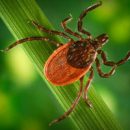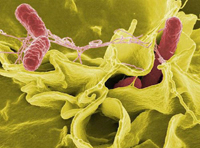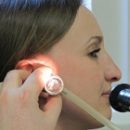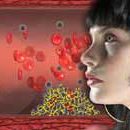What is the carriage of golden staphylococcus? What it is fraught? How to avoid baby infection with golden staphylococcus? Answers to these questions you will find in the article.
Content
Man - Main Tank of Golden Staphylococcus (Staphylococcus aureus). Staphylococci are frequent inhabitants of the skin and mucous membranes. On the one hand, they are found in healthy carriers, on the other, are one of the most dangerous hospital microorganisms that can cause severe infectious complications. Staphylococcus infection can have both endogenous and exogenous sources. The endogenous source is the patient himself, exogenous - other patients, animals or surrounding items.
About the carrier of golden staphylococcus

Wearing is the preservation in the body of a practically healthy person of pathogens of infectious diseases and the allocation of them into the external environment. In such healthy carriers, golden staphylococci meet mainly in the nose cavity. According to the latest research during the first week of life, 90% of newborns are nasal (in the nasal cavity) carriers of golden staphylococci. In the first 2 years of life, only 20% of children detect golden staphylococcis in the nasal cavity, and by 4-6 years they are detected in 30-50%. The carriage in adults fluctuates in the range of 12-50%.
Although the nasal cavity is the main habitat of golden staphylococcus, they can
Also in the area of the perineum, in the larynx, in the armpits and on the scalp of the scalp, in the gastrointestinal tract. Golden Staphylococcus is found in the vagina in 5-15% of women after the onset of the first menstruation. During menstruation, the frequency of carrier increases to 30%, which plays an important role in the development of toxic shock.
Staphylococcal care people are not always accompanied by significant problems. therefore,
man in the nasophal «dwells» this microorganism is far from always suspect. And, accordingly, can serve as a source of infection - t.E. «infect» Staphilococcus
other people. And naturally, it is possible to infect not only from people with asymptomatic
carrier, but also from patients with various forms of staphylococcal infection. BUT
the forms of these set - ranging from the mouth of the skin, finishing
Staphylococcal damage to the stomach and intestines.
Golden staphylococcal carriage is transient (transient) or constant, which depends on the characteristics of the species, the state of the body and competing microflora. In permanent media, one kind of golden staphylococcus detects for many months and years. Long-term observations indicate that approximately 20% (12-30%) of people relate to permanent media, 30% (16-70%) - to transient, and in 50% (16-69%), golden staphylococcus detects.
The carrier of golden staphylococcus is predisted with frequent contacts with the source of infection and
Permanent disorders of the purpose of skin. Therefore, carriers are especially many among medical
workers, injection drug addicts, patients with chronic renal failure in need of dialysis, as well as among sugar diabetes and chronic skin diseases.
Warning of golden staphylococcus - an important risk factor of staphylococcal infection, t.To. With any decrease in immunity, it is possible to occur a staphylococcal infection that can manifest itself anywhere.
Staphylococcal care and newborns
The severity and form of staphylococcal infection depends on many factors - ways
infection, dose of infect, characterities of the body «owner» (prematurity,
immunodeficiency concomitant diseases, hereditary features), and also
features of the microbe itself (t.E. Specific Staphylococcus Staff).
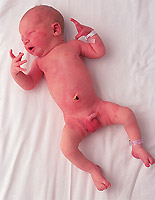
It is especially dangerous to the carriage of golden staphylococcus in women of the rootgeneric period in the vagina, t.To. During childbirth, infection of the newborn.
And the diversity of staphylococcal infection in newborns is very large. Staphylococcus can affect
Many organs and systems, often causing them purulent inflammation. It can be ommopalites
(inflammation of the navel), furuncules, impetigo, phlegmons and other lesions of the skin and subcutaneous fat
fiber, pneumonia, osteomyelitis (bone marrow inflammation), enterocolite (more often as a result
intestinal dibissacteriosis caused by antibiotics and / or other reasons). The most severe form of staphylococcal infection - sepsis («blood poisoning», As they speak in the people), because with it, purulent inflammation can cover the central nervous system, and the liver and t.D.
In addition, even increased reactivity of the child's body to staphylococcus life products is also possible. Such reactivity is due to two severe forms of staphylococcal infection - toxic epidermal necroliz (syndrome «Scratched babies») and toxic shock syndrome.
The severity and form of staphylococcal infection depend on many factors - the paths of infection, the dose of infect, the characteristics of the body «owner» (presence, immunodeficiency concomitant diseases,
hereditary features), as well as the microbe itself (t.E. Specific strain
staphylococcus).
Fortunately, not always a staphylococcal infection proceeds hard. Much more often consequences
infection with this microbe of the newborn, with a good level of health, do not threaten the life of the baby. However, from all of the above, it can be seen that it is necessary to actively fight even with
asymptomatic carrier of golden staphylococcus.
Starting the battle with staphylococcus preferably before conceiving a child. Future
parents do not prevent the microbiological examination to
carriage of them staphylococcus (studied strokes from nasopharynx, genital paths
Women and Cal). Relevant control and during pregnancy.
Fortunately, not always a staphylococcal infection proceeds hard. Much more often
The consequences of infection with this microbe of the newborn, with a good level
health, do not threaten the life of the baby.
Staphylococcal care of medical personnel
Staphylococcus infection almost «Traditionally» It is considered to be hospital infection.
It is in hospitals (and other medical institutions) that the carriers are concentrated
staphylococcus, both sick and outdoor healthy. It is there Staphilococcus «find out»
for yourself «owners» - After all, almost any sick person has any
Reducing immunity, and therefore, with respect to the microbe, such a person is more
«Gostechamen». In addition, hospital conditions can contribute to the survival of the most
perfect from the biological point of view of staphylococci, t.E. Genetically sustainable K
Antibiotics.
According to medical statistics, among patients enrolled in the hospital, 20-30% of them become carriers of predominantly hospital species of golden staphylococci. This is especially true of patients treated with antibiotic patients with diabetes, patients on hemodialysis, immunodeficiency patients, as well as infectious diseases. Hospital types of golden staphylococci are responsible for many purulent diseases and wound infections in clinics. So, among the carriers of golden staphylococcal in the nasophal, the wound infection after operations on the heart occurs more often than among other patients.
Among the medical personnel, nasal carriage of golden staphylococcus can reach 35% . The carriage of golden staphylococci in medical personnel contributes to the spread of these microorganisms in the environment, therefore, the carriage of golden staphylococci among
medical personnel must be identified and treated, which will help control
Staphylococcal outbreaks in the hospital.


